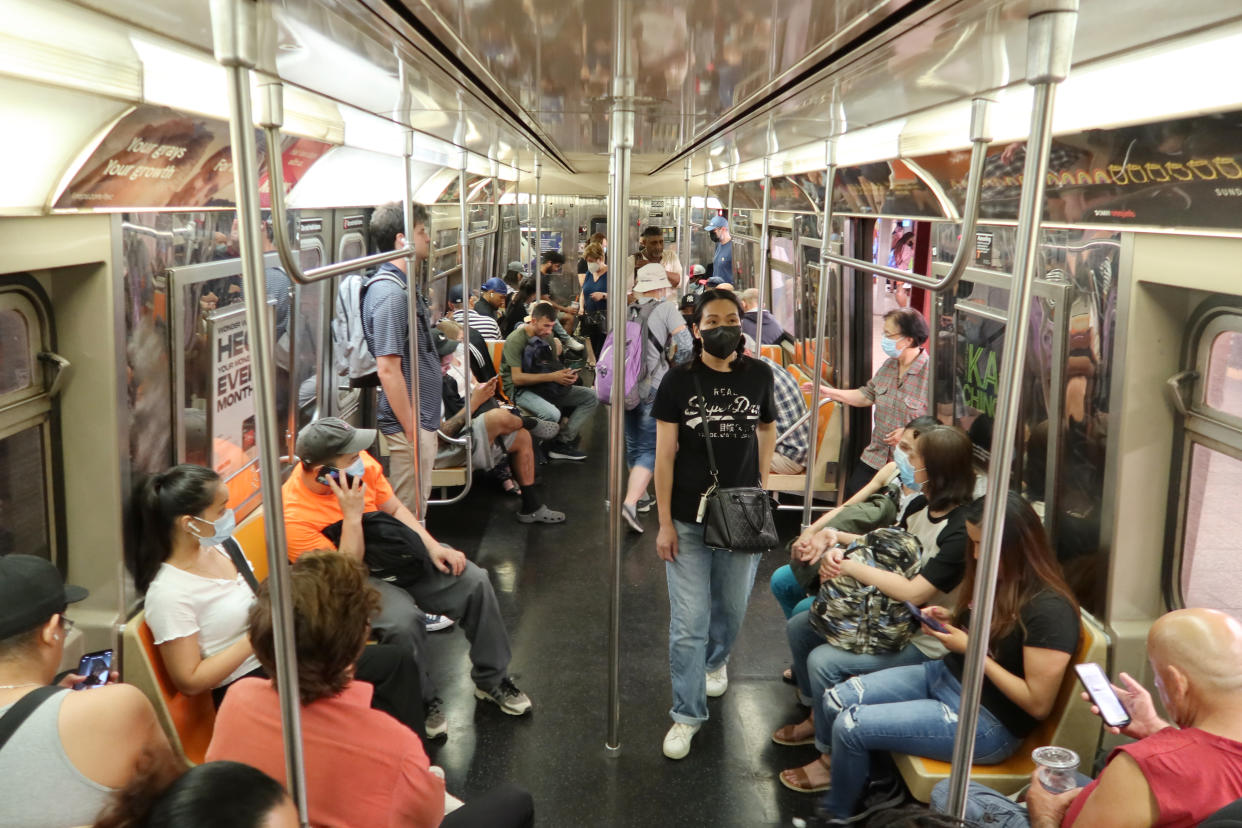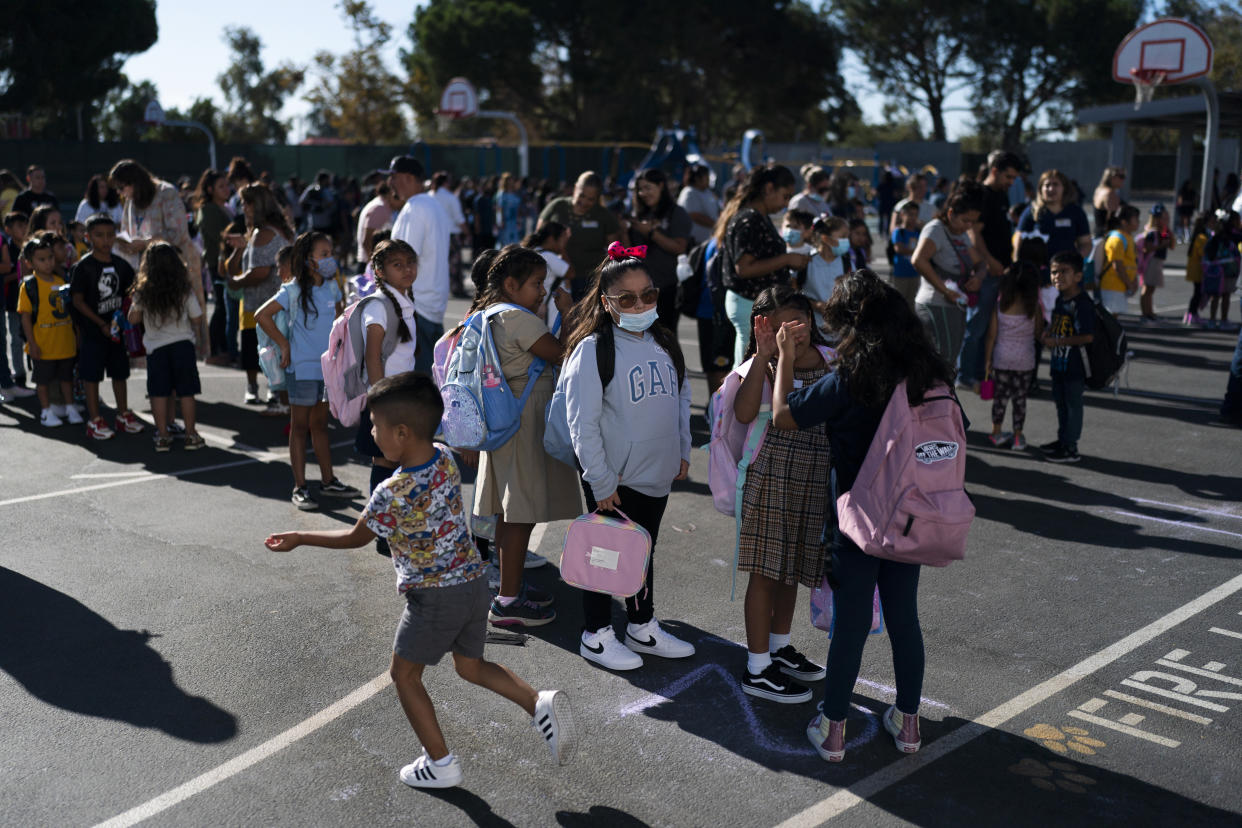CDC moves beyond COVID emergency with new guidance
WASHINGTON — The day after a newly coronavirus-free President Biden embarked on a post-infection vacation to South Carolina, the Centers for Disease Control and Prevention released revisions to pandemic guidance that clearly indicate a shift from the state-of-emergency approach that has been in place, at least on the federal level, since 2020.
The new rules, unveiled by the CDC’s chief field epidemiologist Dr. Gretta Massetti on Thursday afternoon, are the latest sign that the Biden administration is seeking to move into a new post-pandemic mode that acknowledges the dangers posed by the coronavirus but also allows people to make their own decisions about how much those dangers should dictate their lives.
“This guidance acknowledges that the pandemic is not over, but also helps us move to a point where COVID-19 no longer severely disrupts our daily lives,” Massetti said in a statement that accompanied the new guidance, which was cheered by some and denounced by others.
Among several revisions, the update says that “screening testing of asymptomatic people without known exposures” is no longer necessary. The new guidance also recommends "case investigation and contact tracing only in health care settings and certain high-risk congregate settings."
Such shifts are meant to reduce some of the inconvenience and disruption people and institutions have experienced in trying to reduce the spread of the coronavirus. The new approach emphasizes finding and treating cases of serious illness, not stamping out every infection.
An accompanying guidance for schools dispenses with last year’s test-to-stay policy, which mandated that students in a classroom with a confirmed coronavirus exposure be tested regularly in order to keep attending school.

The new rules still recommend that people who are sick with COVID-19 should isolate at home, but people — including students in schools — do not have to quarantine if they have been exposed to someone who had tested positive but are not feeling sick themselves. Instead, people who have been exposed should take a diagnostic test on the fifth day after the date of exposure, and to wear a mask for ten days after that date.
“Quarantine is no longer recommended for people who are exposed to COVID-19 except in certain high-risk congregate settings such as correctional facilities, homeless shelters, and nursing homes,” Thursday’s revised rules say. “In schools and [early childhood education] settings, which are generally not considered high-risk congregate settings, people who were exposed to COVID-19 should follow recommendations to wear a well-fitting mask and get tested.”
People isolating with coronavirus symptoms still need to wear a mask for five days after the end of the five-day isolation period.
But the agency no longer emphasizes physical distancing, a popular practice from the early days of the pandemic that later became contentious. “Physical distance is just one component of how to protect yourself and others,” the revised guidance says.

And while earlier rules treated vaccinated and unvaccinated people differently, that difference has now been erased, even if the CDC continues to urge vaccination as a baseline protection. New variants of the coronavirus have shown the ability to evade the defenses offered by vaccines, making them less effective than had once been hoped. At the same time, so many people have been infected with the coronavirus that natural immunity appears to have provided a bulwark of its own.
“High levels of population immunity due to vaccination and previous infection, and the many tools that we have available to protect people from severe illness and death, have put us in a different place,” Massetti acknowledged on Thursday.
Even many states with Democratic leadership, where caution had been the norm for most of the first two years of the pandemic, started to return to a kind of pre-pandemic normal in early 2022. The new CDC guidance seems to acknowledge that reality, leaving individuals to make their own decisions about how many protections to take.
“I’m glad the CDC is finally meeting the moment and recognizing our broad health needs beyond simply not getting COVID,” Dr. Lucy McBride, a Washington internist and podcaster, wrote in an email to Yahoo News. “For kids in particular, it’s time to more appropriately balance the harms of COVID with the harms of mitigation measures. COVID is here to stay. Living in a perpetual state of emergency isn’t sustainable; it’s also not necessary with widespread availability of vaccines and therapeutics.”

Others, however, lamented that a presidential administration that had promised to “listen to the science” was abdicating its responsibility to Americans left vulnerable by illness, poverty or other conditions.
“Capitulation,” said Yale public health expert Gregg Gonsalves in a text message to Yahoo News. He and others have noted that hundreds continue to die daily from COVID-19, and that poor people and people of color have borne the brunt of the pandemic from the start.
“We need a vaccination and booster campaign and delivery,” Boston University public health expert Julia Raifman told Yahoo News. She also argued for “data-driven surge policies that turn on mask mandates early in bad surges to avoid widespread harm to health, overflowing hospitals, and work and school disruptions.”
Los Angeles County came close to reimposing a mask mandate in July, only to decide at the last minute against doing so.
The White House did not respond to a Yahoo News request for comment, but officials there have used Biden’s own bout with the coronavirus as evidence that vaccination, combined with treatment, readily blunt the effects of the disease. And they, like Massetti, have pointed out that the ever-evolving pathogen is unlikely to fully disappear, as some had once hoped. That hope now seems woefully naive.

“This virus is going to be with us forever,” Dr. Ashish Jha, the White House pandemic response team coordinator, said at a briefing last month.
The new rules come as students prepare to return to school and many white-collar workers head back to the office. Meanwhile, airplanes are packed, as are sports stadiums and restaurants.
“The goal has to be to minimize disruption to school, work and other aspects of life,” medical analyst Dr. Leana Wen told Yahoo News in an email. “It also acknowledges that, at this point, people have different levels of risk and risk tolerance, and need to be able to choose mitigation measures accordingly.”

